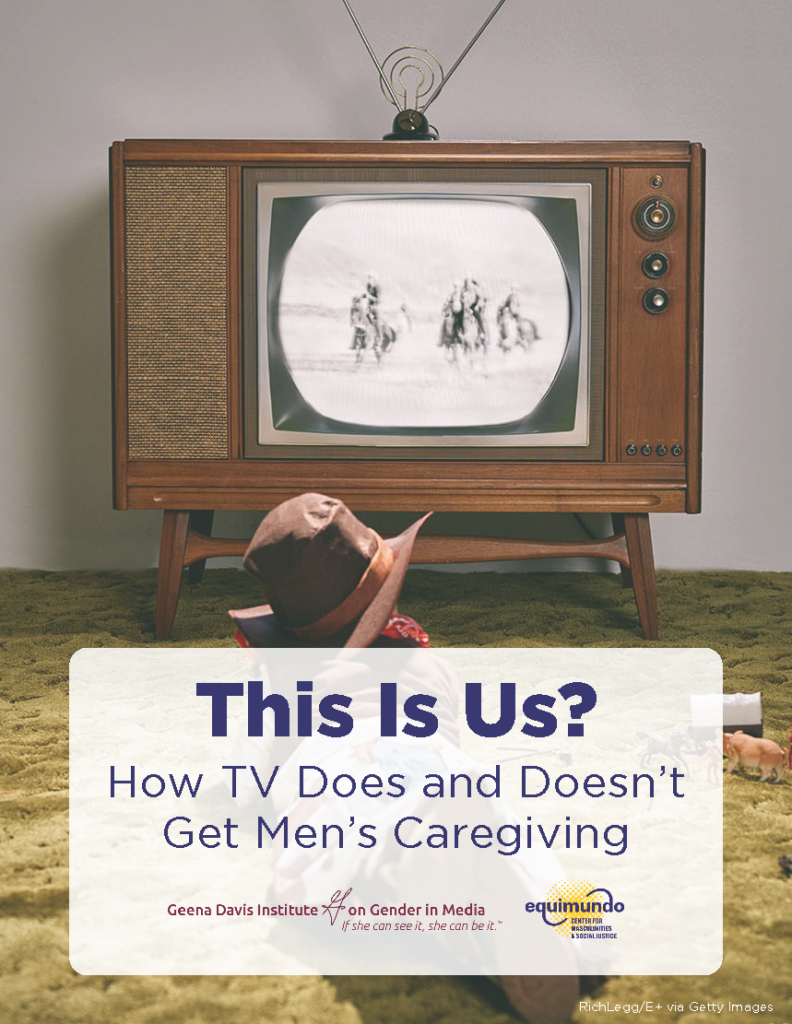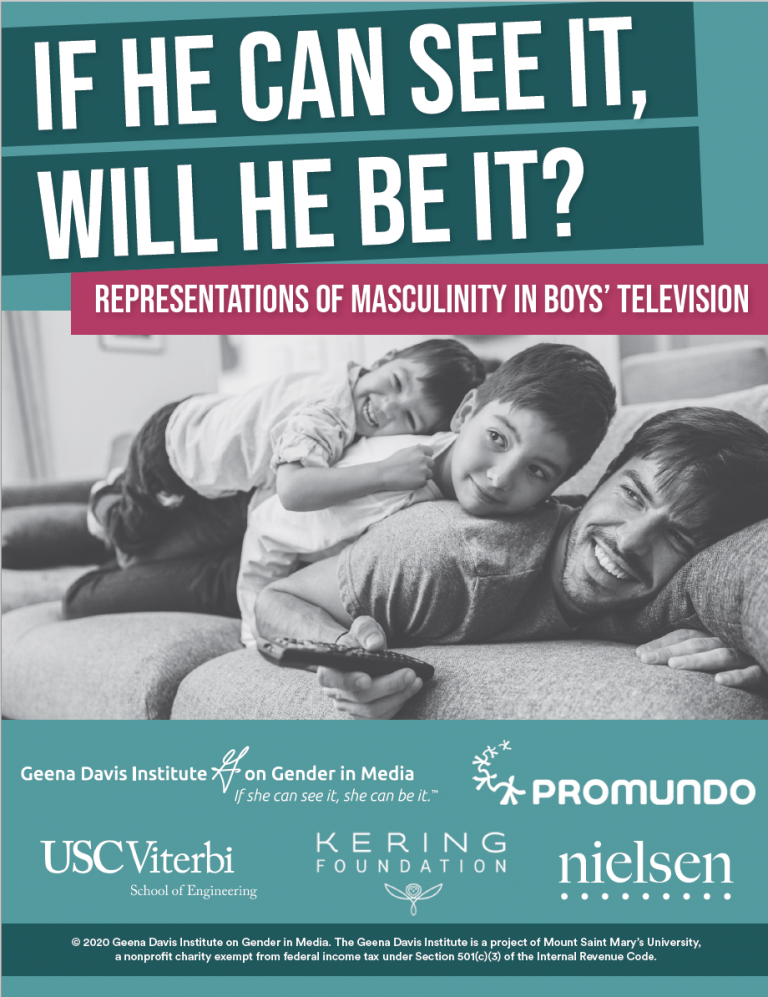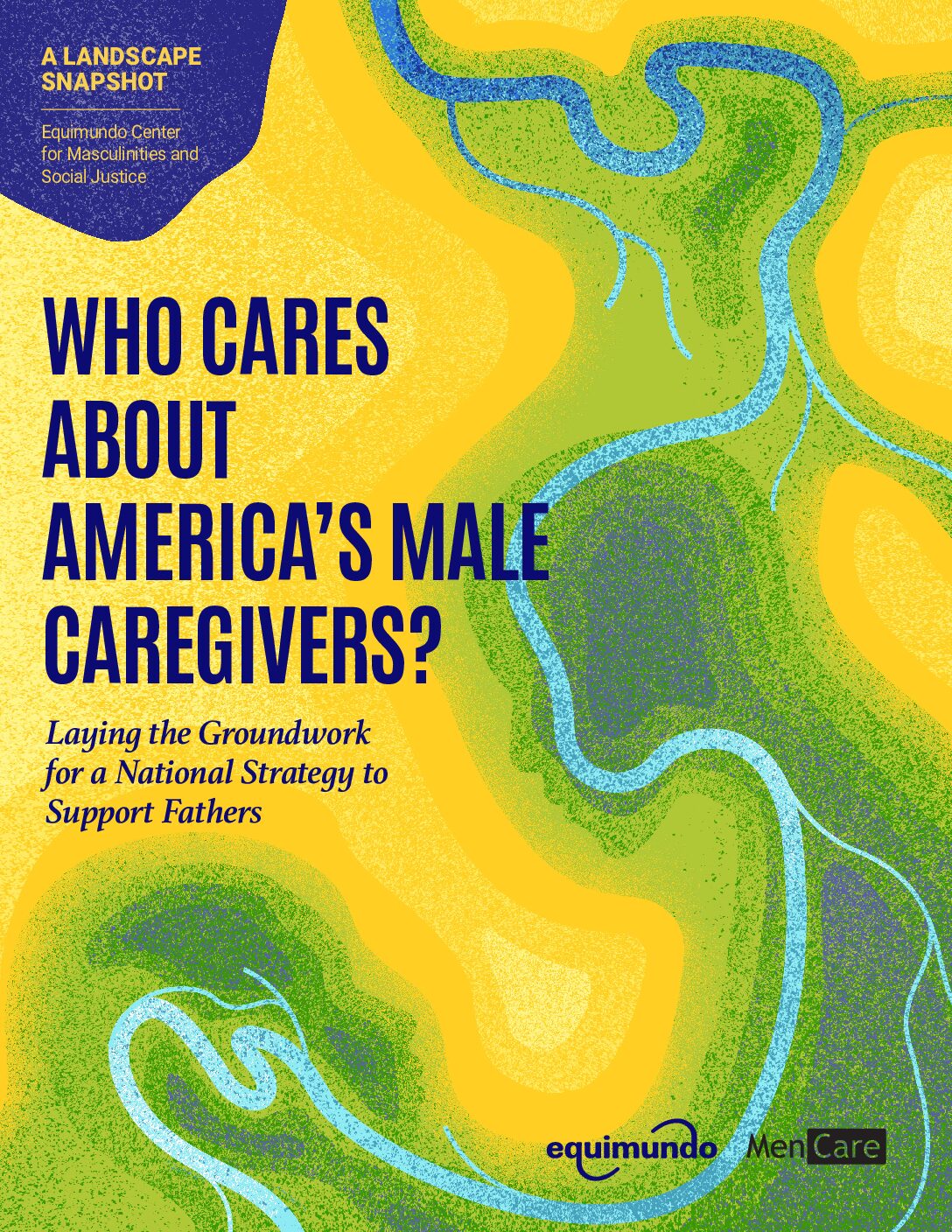Americans watch a lot of television. Their households consume an average of two to eight hours a day, depending on how it’s measured. It makes sense, then, that television is an important force for how we understand and treat ourselves and others. That includes how we come to understand parenting and caregiving, including caring for children, aging parents, people with disabilities, and more. In recent decades, we’ve seen fathers like Homer Simpson (The Simpsons, Fox) and Phil Dunphy (Modern Family, ABC) delightfully stumble and surprisingly shine in their caregiving roles, and we’ve watched Uncle Phil (Fresh Prince, NBC) step up to care for his nephew, and Danny Tanner (Full House, ABC) fill his role as a single dad. And for many, Mister Rogers (Mister Rogers’ Neighborhood, PBS) cared for viewers directly, addressing them in their living rooms as they watched.
But what is the current state of caregiving on television? In particular, how are men being shown as caregivers? How much do current shows validate and reinforce rigid models of male caregiving linked to unhealthy masculinity, or how do shows take the opposite tack and afford real-world men a roadmap toward “new fatherhood,” more balanced relationships with their partners, and positive relationships with their dependents? These portrayals are important for understanding men’s actual caregiving. They likely also shape debates around public policies that affect those who are in care of others.
To answer these questions, we analyzed 225 popular scripted broadcast and streaming television shows from 2013 to 2020. From the nearly one thousand characters we identified as caregivers, one overall finding stuck out: While men are depicted doing hands-on caregiving at higher rates than in the past, they are too often shown as abusive, incompetent, and/or emotionally distant. These persistent tropes point to the need for more stories that show men as imperfect but connected, emotionally responsive, invested, and equitable caregivers. Given that television has the power to shape our culture, we hope that this report, This Is Us? How TV Does and Doesn’t Get Men’s Caregiving, will inspire new and reimagined stories about what caregiving can look like for the next generation.
This Is Us? Main Findings
WHO DOES THE CAREGIVING?
- In recent years, men and women were shown as caregivers at a similar rate in popular TV shows.
- Most caregivers on popular scripted TV shows were portrayed by white actors. However, caregivers portrayed by people of color were increasingly more common. From 2013 to 2020, portrayals of caregiving by people of color increased from 21% to 42%.
- Female caregivers were doing one-third more on-screen caregiving tasks (such as cooking, cleaning, laundry, play) than male caregivers.
- In more recent TV scripted shows, men were doing more housework, but it was gender- stereotypical housework (such as fixing a sink, grilling, or painting) and not housework associated with domesticity (such as cleaning, cooking, or laundry).
TROPES: ABUSIVE, APPRENTICE, AND ABSENT DADS?
- Male caregivers were nearly two times more likely than female caregivers to be shown as incompetent — a perpetuation of the “apprentice dad” trope.
- Male caregivers were one and a half times more likely than female caregivers to be emotionally abusive, and four times more likely to be physically abusive — a perpetuation of the “abusive dad” trope.
- Male caregivers were less likely than female caregivers to be depicted as affectionate, supportive, or offering emotional care.
- Just as representations matter, so do words. We chose male caregivers as a broader definition of the many kinds of caregiving men do, including but not exclusive to being fathers. This includes caring of elderly parents, siblings, other family members, adopted children, as well as the diversity of biological and social fathers.
This Is Us? Recommendations
- BREAK DOWN GENDER STEREOTYPES AROUND HOUSEWORK: Show men doing stereotypically feminized tasks, like cooking and cleaning, and show women doing stereotypically masculinized tasks, like mowing the lawn or fixing the sink. This study found a gender divide in the caregiving tasks shown on the most popular broadcast and streaming television.
- DISRUPT THE MALE-BREADWINNER MODEL: Show effective co-parenting and networks as well as communities of care. Dual-income families are the norm nowadays, but representations of these families were relatively rare in the programs analyzed.
- HELP MALE CAREGIVERS UP WHEN THEY GET KNOCKED DOWN, AGAIN: Center stories on the vulnerability of male caregivers, such as them talking to other men about their emotions and/ or seeking professional help. This study found that male caregivers were less likely than female caregivers to show emotion or affection.
- MODEL MALE ACCOUNTABILITY: Avoid storylines with simplistic family-reconciliation narratives wherein male caregivers are forgiven simply because “family is family,” without much effort on the part of the male caregiver — or any caregiver — to acknowledge the harm done and change their behavior.
- DIVERSIFY MALE CAREGIVERS: Subvert or avoid racial stereotypes in depictions of male caregivers. Seek a diverse team of screenwriters to script complex portrayals of male caregiving. This study found that white male caregivers outnumbered all male caregivers of color, more than two to one.
- EMBRACE MORE STORYTELLING ABOUT CARE AND CAREGIVING: Tell more stories that draw inspiration from the ups and downs of real life caregiving. Audiences respond positively to complex stories of caregiving, and because of the COVID-19 pandemic, care and caregiving have never been more central to our lives — and television plays a key role in affirming that for viewers.



